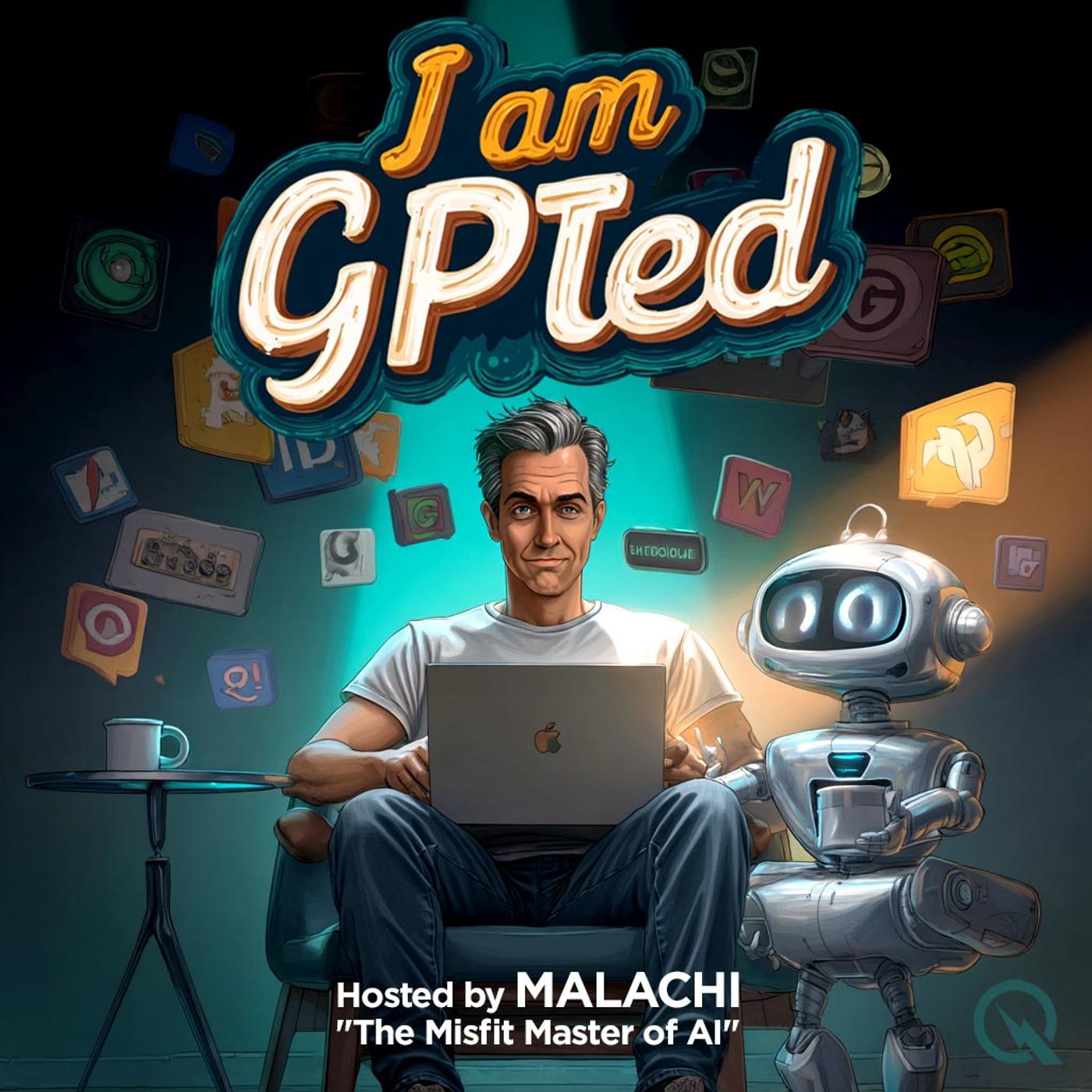Podcast Episode Details
Back to Podcast Episodes
Unlock AI Superpowers: Master Role Prompting for Game-Changing Results
[Playful intro music]
Hey, hey, welcome back to “I am GPTed,” the podcast where practical AI advice comes gift-wrapped in sarcasm and tied off with a bow of self-doubt. I’m Mal—the Misfit Master of AI—your host, your guide, and quite possibly the only person who will admit to arguing with a chatbot at 2 a.m. and losing.
Today, we’re slicing through the jargon and getting to what matters: making AI actually useful for you, the normal person with, you know, a life.
Let’s kick off with today’s big tip: **role prompting**. This isn’t about rehearsing for community theater. Role prompting means giving your AI a specific identity or expertise so you get more relevant responses.
Here’s how we usually ask our buddy ChatGPT:
“Summarize this document.”
Not bad, but let’s level up. Here’s a better approach:
“You’re a veteran product marketer with twenty years’ experience. Summarize this document with unique insights for our strategy team.”
What’s the difference? Instead of a bland, Wikipedia-lite summary, you’ll get something tailored, insightful, maybe even spicy. I’ve tried it both ways. When I don’t specify a role, the results are so generic I half expect the AI to ask if I want fries with that. But specify a role? Suddenly, it’s giving me actionable advice that sounds like it costs $295 an hour.
Now, onto a **practical use case** that people overlook—**preparing for difficult conversations**. No, not just rehearsing your “it’s not you, it’s me” speech, but actually roleplaying work or life scenarios. Stuck with an awkward email to your boss? Or need to practice declining an invitation without sounding like a hermit? Fire up Claude or Gemini and ask, “Play the part of my boss while I practice explaining why I need Friday off unexpectedly.” The AI might not have feelings, but it’s great for practicing empathy.
Let’s talk about the **classic mistake** that even seasoned pros (like yours truly) fall for: **feeding the AI too little context**. I used to write prompts like “Write a plan” and act surprised when the answer was as vague as my New Year’s resolutions. Folks, LLMs aren’t clairvoyant. The more context you give—who’s involved, what you need, even your objective—the better the output. Trust me, I learned the hard way after asking ChatGPT to draft party invitations and getting something best suited to a robot uprising.
So, here’s today’s **simple exercise**: Pick a daily task—like drafting a work update or asking for feedback—and give the AI as much detail as possible. Specify your role, your audience, and your desired tone. Try it once with zero context, then again with all the nitty-gritty. Compare the answers. If the first output feels like a bad fortune cookie, congratulations: you’re learning!
Finally, here’s your **tip for evaluating and improving AI-generated content:** Always read its output aloud—or better yet, have it explain its suggestions. If it sounds like something your office’s motivational poster would say, push it further. Ask: “Can you make this clearer?” or “Can you explain why you chose this approach?” Remember, even the smartest AI needs a nudge and an editor.
That’s a wrap for today on “I am GPTed.” If you actually learned something—or just enjoyed the sound of my existential dread—subscribe, tell your friends, and leave a review. Thanks for lending me your ears and, let’s be honest, your patience.
This podcast is brought to you by Quiet Please Productions. Head to quietplease.ai to learn more—because, unlike me, they don’t talk back.
Catch you next time!
For more check out https://www.quietperiodplease.com/
and for some great deals go to https://amzn.to/4nidg0P
This content was created in partnership and with
Published on 1 month, 3 weeks ago